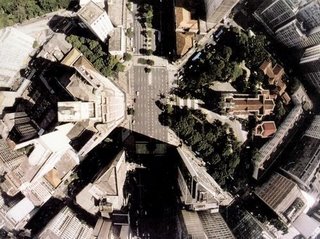
BELO HORIZONTE - MG
Is a Brazilian and capital municipal district of the state of Minas Gerais. It is the third main urban center of the country, the fifth in population, with 2.375.329 inhabitants (IBGE, 2005), 5,1 million in the metropolitan area. It is located in the Southeast area, to 716 km of Brasília, 586 km of São Paulo, 444 km of the city of Rio de Janeiro and to 850 m above the level of the sea. The city is served by a mesh viária and rail that the league to the main centers and ports of the country. The climate is interesting and pleasant the whole year, with the medium temperature of 21 degrees Celsius, in spite of in the last fifteen years the medium temperature in the city to have arisen more than 3ºC. The month of July, that was it more cold with average of 17ºC, is now with average at the house of the 19ºC. Belo Horizonte is also the Gate of Entrance for Brazilian colonial cities, like Ouro Preto, Sabará, Congonhases and Tiradentes. It possesses flights of all the capitals of Brazil through AeroHistória
The city originated from a small villa call Curral Del Rey, founded by João Leite of Silva Ortiz, that found the climate of the pleasant area, and there he/she settled down. In the end of the century XIX, the then capital of Minas Gerais, the city of Ouro Preto, presented difficulties of accommodating an urban expansion, due to its location. That generated the need of the transfer of the capital to another place. Belo Horizonte was born of the decision of building a new city for such end.
Space of the report writing for Aarão Reis, engineer-boss of the Building Commission of the New Capital, on the definitive plant of Belo Horizonte, approved by the Ordinance n.º 817 of April 15, 1895.
It was organized, the general plant of the future city being disposed in the central part, in the place of the current camp, the urban area, of 8.815.382 m², divided in blocks of 120 m x 120 m for the streets, wide and well guided, that if crusam in right angles, and for some avenues that cut them in angles of 45th.
To the streets I made to give the width of 20 meters, necessary for the convenient arborização, the free circulation of the vehicles, the traffic of the cars and works of the placement and repairs of the underground canalizations. To the avenues I fastened the width of 35 m., enough to give them the beauty and the comfort that will owe, of future, to provide to the population (...)
No comments:
Post a Comment